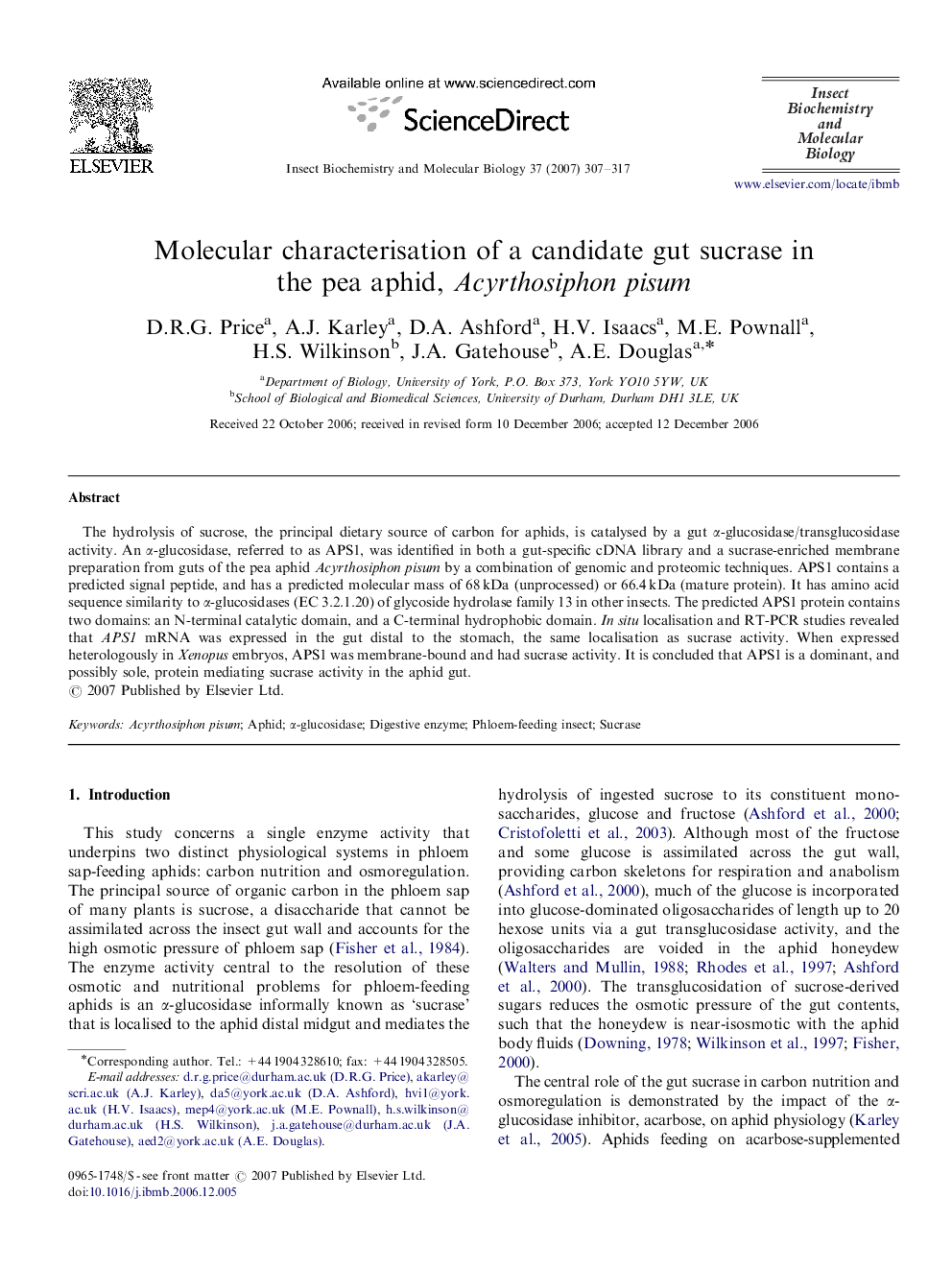| Article ID | Journal | Published Year | Pages | File Type |
|---|---|---|---|---|
| 1983033 | Insect Biochemistry and Molecular Biology | 2007 | 11 Pages |
The hydrolysis of sucrose, the principal dietary source of carbon for aphids, is catalysed by a gut α-glucosidase/transglucosidase activity. An α-glucosidase, referred to as APS1, was identified in both a gut-specific cDNA library and a sucrase-enriched membrane preparation from guts of the pea aphid Acyrthosiphon pisum by a combination of genomic and proteomic techniques. APS1 contains a predicted signal peptide, and has a predicted molecular mass of 68 kDa (unprocessed) or 66.4 kDa (mature protein). It has amino acid sequence similarity to α-glucosidases (EC 3.2.1.20) of glycoside hydrolase family 13 in other insects. The predicted APS1 protein contains two domains: an N-terminal catalytic domain, and a C-terminal hydrophobic domain. In situ localisation and RT-PCR studies revealed that APS1 mRNA was expressed in the gut distal to the stomach, the same localisation as sucrase activity. When expressed heterologously in Xenopus embryos, APS1 was membrane-bound and had sucrase activity. It is concluded that APS1 is a dominant, and possibly sole, protein mediating sucrase activity in the aphid gut.
